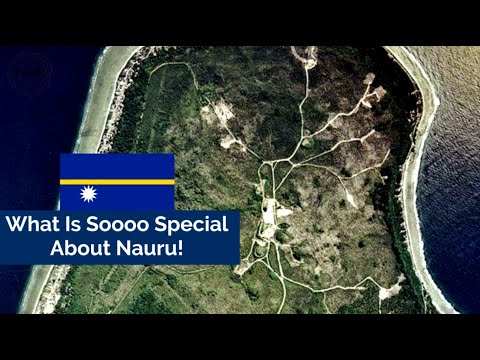
Nestled just below the equator in the central Pacific Ocean lies Nauru, one of the world’s smallest island nations. Despite its diminutive size, covering just 21 square kilometers, Nauru presents a fascinating destination filled with unique attractions and a rich history that beckons travelers seeking something truly off the beaten path. This WikiTravel Destinations Video Tour invites you to discover what makes Nauru so special.
### Untouched Natural Beauty
Nauru’s isolation has preserved much of its natural beauty untouched and pristine. The island is ringed by a coral reef that harbors colorful marine life, making it an ideal spot for snorkeling and scuba diving. The crystal-clear waters offer visibility up to 30 meters, allowing divers to immerse themselves in a vibrant underwater world.
Above water, Nauru’s coastline features breathtaking cliffs and secluded white sandy beaches such as Anibare Bay on the eastern side of the island. Anibare Bay is not only perfect for swimming and sunbathing but also renowned for its powerful surf waves.
### A Walk Through Time
The history of Nauru is both intriguing and poignant. Originally inhabited by Micronesian and Polynesian settlers over 3,000 years ago, it was later annexed by Germany in the late 19th century before being captured by Australian forces in World War I. Post-war, it became a trust territory under Australia, New Zealand, and Britain until achieving independence in 1968.
One cannot discuss Nauru without mentioning its phosphate mining era which brought significant wealth to the island during the mid-20th century but also left environmental scars that are still visible today. Exploring these phosphate mining areas offers a glimpse into the complex economic history of Nauru while highlighting current regenerative efforts.
### Rich Cultural Tapestry
Nauruan culture is a vibrant tapestry woven from centuries-old traditions and contemporary influences. Traditional crafts like weaving and storytelling are still celebrated among locals. Visitors have an opportunity to learn about local legends and customs through cultural festivals and events that take place throughout the year.
One cannot miss experiencing local cuisine which includes fresh seafood delicacies such as coconut crab, a local specialty renowned across the Pacific islands for its succulent meat.
### Commitment to Conservation
Despite past challenges with phosphate mining, there has been a strong push towards conservation on Nauru. Efforts are underway to rehabilitate mined-out lands with indigenous vegetation being replanted. These initiatives not only aim to restore ecological balance but also improve quality of life by creating recreational spaces for residents and visitors alike.
### Why Visit Nauru?
Visiting Nauru offers more than just a typical holiday—it’s about stepping into a completely different world where nature meets history at every turn. It’s about seeing firsthand how an isolated community thrives despite geographical limitations.
With few tourists making their way here compared to more accessible destinations like Fiji or Hawaii, those who do choose Nauru encounter little commercialization and can enjoy genuine interaction with local residents without feeling like one in a crowd of many.
So consider adding this little-known gem to your travel bucket list if you’re yearning for serenity away from bustling tourist spots—a visit to Nauru will surely be nothing short of extraordinary!
This WikiTravel Destinations Video Tour aims not only at showcasing what’s special about visiting such an exclusive locale but also at encouraging sustainable tourism practices that help preserve this unique island nation for future generations.
